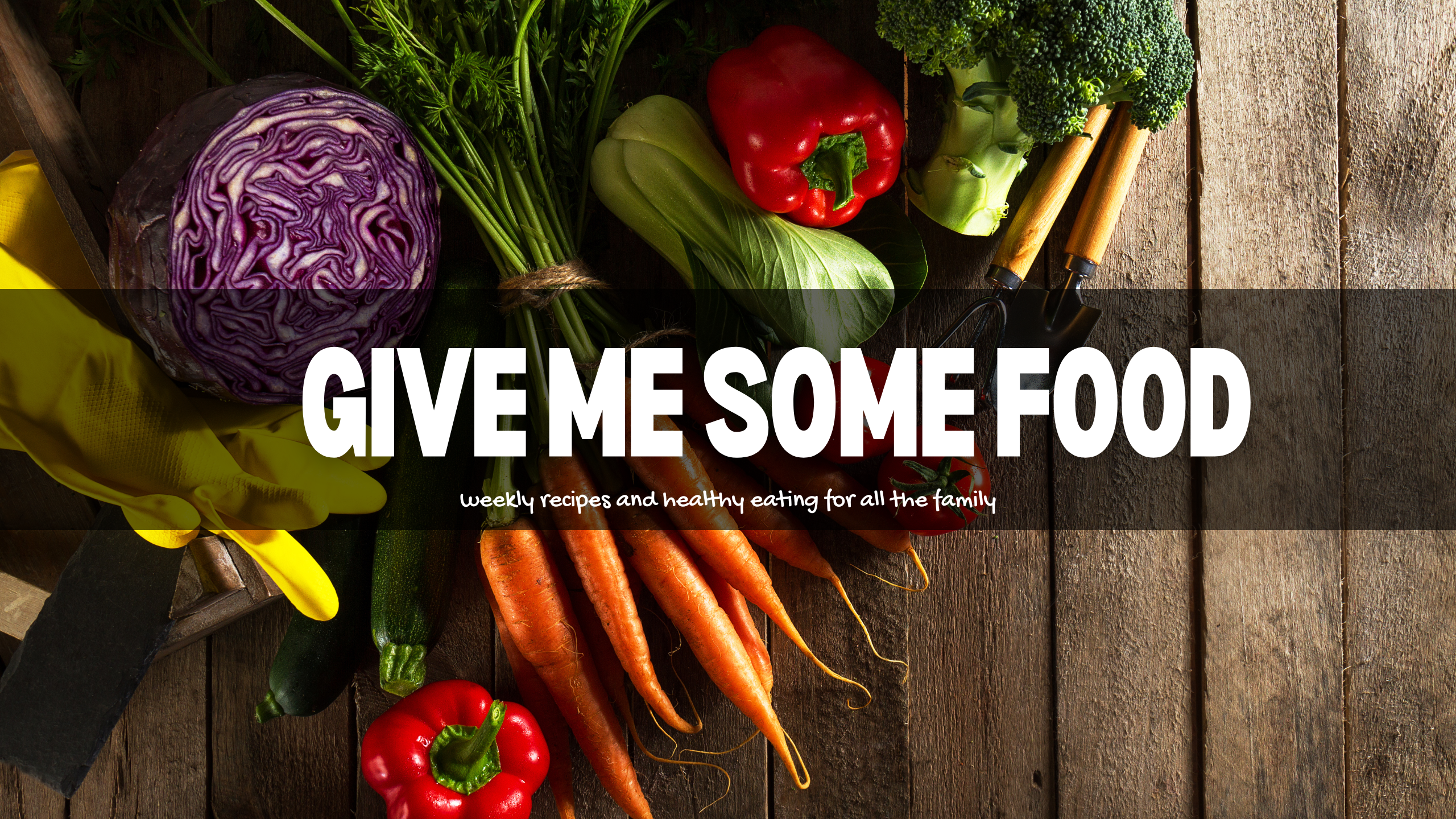The DASH (Dietary Approaches to Stop Hypertension) diet is a long-term eating plan that helps prevent and manage high blood pressure. It was created by the U.S. National Institutes of Health to promote heart health and overall wellness through better food choices.
This diet focuses on increasing the intake of nutrients like potassium, magnesium, calcium, and fiber, which are known to support healthy blood pressure levels. It also encourages reducing foods high in saturated fat and sodium, both of which can raise blood pressure if consumed in excess.
The DASH diet was tested in a major clinical study known as the first DASH trial, conducted between 1993 and 1997. The results showed that people who followed this diet experienced a noticeable drop in blood pressure. Because of its strong research foundation and practical approach, the DASH diet is often recommended by doctors and nutritionists for people with or at risk of hypertension.
🏆 Why the DASH Diet Works
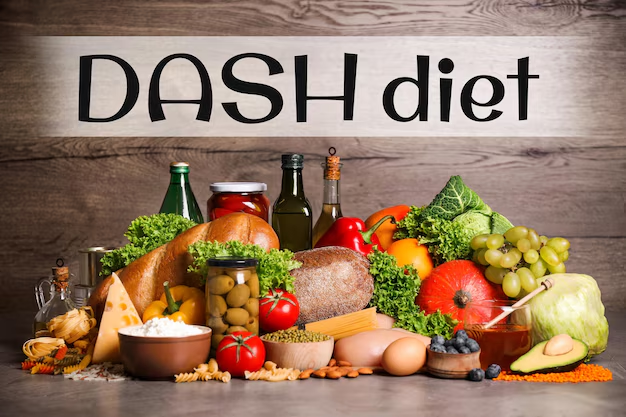
Limitation of Dietary Sodium Consumption: The DASH eating plan emphasizes a considerable reduction in the daily intake of sodium, recommending a maximum limit of 2,300 milligrams per day, and ideally as low as 1,500 milligrams for greater cardiovascular protection. This restriction is specifically intended to support the maintenance of optimal heart function and assist in the regulation of elevated blood pressure levels.
Abundance of Nutritionally Beneficial Elements: This nutritional approach promotes the regular consumption of foods that are abundant in essential dietary components such as potassium, magnesium, calcium, fiber, and high-quality lean protein. These nutrients are fundamentally important for the regulation of blood pressure, the promotion of vascular health, and the improvement of overall physiological well-being.
Contribution to Sustainable Weight Regulation: By encouraging the inclusion of whole grains, nutrient-rich fruits and vegetables, and low-fat protein sources, the DASH dietary pattern supports effective long-term weight management. Maintaining a healthy body weight is a significant factor in reducing the risks associated with hypertension and other related cardiovascular conditions.
Extensive Scientific Validation and Evidence: Numerous scientific investigations have confirmed the health benefits associated with the DASH eating strategy. One comprehensive analysis demonstrated that combining DASH principles with sodium reduction could lower the likelihood of cardiovascular events by approximately 14%, particularly among female populations and individuals of African descent. In a separate clinical study, adherence to the DASH diet was shown to reduce the risk of developing heart disease by an estimated 10.3% when compared to individuals following a conventional American dietary pattern.
🧭 DASH Diet Guidelines
Here’s a daily serving guide based on a 2,000-calorie plan:
| Food Group | Daily Servings |
|---|---|
| Whole grains | 6–8 |
| Vegetables | 4–5 |
| Fruits | 4–5 |
| Low‑fat dairy | 2–3 |
| Lean meat/fish/poultry | ≤ 6 oz |
| Nuts, seeds, legumes (weekly) | 4–5 days/week |
| Fats & oils | 2–3 |
| Sweets | ≤ 5/week |
Focus on low-fat, fiber-rich, nutrient-dense foods and minimize sodium, saturated fats, and added sugar
🌟 9 Inspiring DASH Diet Recipes
Zucchini Noodles with Pesto
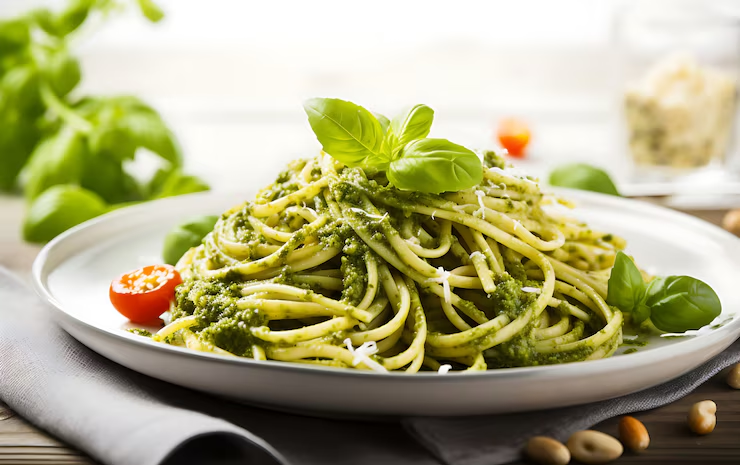
Zucchini noodles with pesto is a light and healthy dish that fits perfectly into the DASH diet. Instead of traditional pasta, spiralized zucchini is used to reduce calories and carbohydrates while adding extra fiber and nutrients. It’s a great way to enjoy a satisfying meal without straying from heart-healthy eating habits.
The pesto sauce, typically made with fresh basil, olive oil, garlic, and nuts, adds a burst of flavor without the need for high-sodium ingredients. You can control the amount of salt or even make a low-sodium version to keep it aligned with the DASH diet’s goals.
This dish is not only delicious but also supports blood pressure control. It’s rich in potassium and healthy fats, making it ideal for those trying to follow the DASH diet. Zucchini noodles with pesto can be enjoyed as a main course or a nutritious side dish.
Baked Herb Chicken
Marinated chicken breasts baked with garlic and thyme make for a flavorful and heart-healthy meal. The marinade adds rich taste without relying on heavy sauces or excess salt, which supports the goals of the DASH diet. Baking instead of frying keeps the dish low in unhealthy fats.
Garlic and thyme not only enhance the flavor but also offer natural health benefits. Garlic is known to support heart health, and thyme adds antioxidants while keeping sodium levels low. This simple preparation method makes it easy to enjoy a delicious meal that fits within a balanced lifestyle.
Serve the chicken with whole grains like brown rice or quinoa, or pair it with a fresh salad for added fiber and nutrients. This combination creates a satisfying and nutritious meal that aligns well with the DASH diet and supports better blood pressure control.
Spinach & Mushroom Omelet
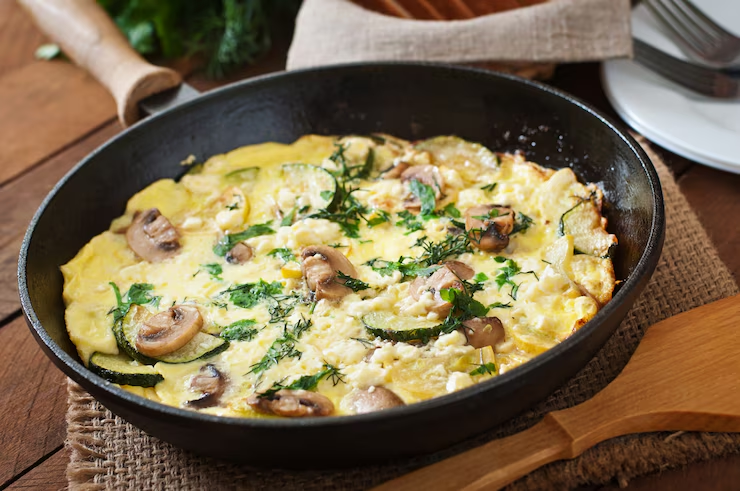
A spinach and mushroom omelet is a nutritious and easy-to-make meal that fits well into the DASH diet. This dish is packed with protein from eggs and loaded with vitamins and minerals from fresh vegetables. It’s a perfect option for breakfast or even a light lunch or dinner.
Spinach provides a rich source of potassium and magnesium, both of which are important for managing blood pressure. Mushrooms add flavor, fiber, and antioxidants without adding extra calories or sodium. Cooking the omelet with a small amount of olive oil keeps it heart-friendly and low in saturated fat.
This simple recipe supports the DASH diet by focusing on whole, fresh ingredients. You can also add a sprinkle of low-fat cheese or herbs for extra flavor. Enjoy it with a side of whole-grain toast or fresh fruit to make a balanced and satisfying meal.
Quinoa & Black Bean Bowl
A quinoa and black bean bowl is a wholesome, plant-based meal that works perfectly with the DASH diet. Quinoa is a complete protein and rich in fiber, helping you stay full while supporting heart and digestive health. Black beans add even more protein and fiber, making this dish both filling and nutritious.
This bowl is naturally low in sodium and high in potassium and magnesium, which are essential nutrients for managing blood pressure. You can enhance the flavor with ingredients like fresh lime juice, chopped cilantro, tomatoes, and avocado—without needing to rely on salty sauces.
Easy to prepare and versatile, the quinoa and black bean bowl is ideal for lunch or dinner. It supports the DASH diet by focusing on balanced nutrition, promoting heart health, and reducing processed food intake. Pair it with a side of greens for a complete and satisfying meal.
Baked Salmon with Asparagus
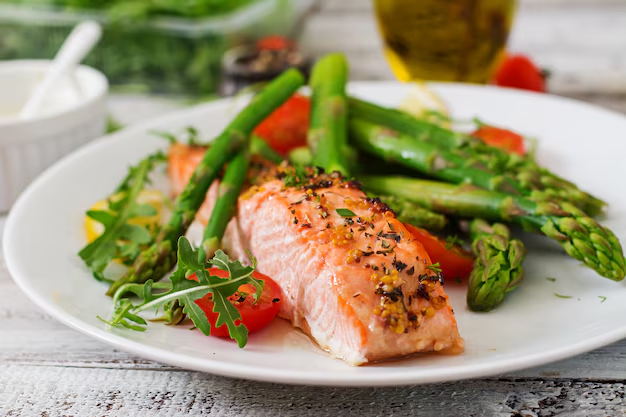
Baked salmon with asparagus is a flavorful and heart-healthy dish that fits well into the DASH diet. Salmon is rich in omega-3 fatty acids, which support heart health and help reduce inflammation. Baking the salmon keeps the meal light and free from unhealthy fats often found in fried foods.
Asparagus is a nutrient-packed vegetable that adds fiber, potassium, and antioxidants to the plate. These nutrients are important for maintaining healthy blood pressure levels. Roasting or steaming the asparagus with a little olive oil and lemon enhances flavor without adding extra salt.
This dish aligns with the DASH diet by focusing on lean protein, healthy fats, and fresh vegetables. It’s easy to prepare and makes a perfect lunch or dinner option. Serve it with a side of whole grains like brown rice or quinoa for a complete and balanced meal that supports long-term wellness.
Turkey & Avocado Wrap
A turkey and avocado wrap is a simple, delicious, and heart-healthy meal that fits well into the DASH diet. Lean turkey provides a good source of protein with low saturated fat, making it a smart choice for supporting healthy blood pressure and overall wellness.
Avocado adds creamy texture and is rich in healthy fats, potassium, and fiber—nutrients that are important in the DASH diet for managing blood pressure. Choose a whole grain wrap to increase fiber intake and keep the meal filling and balanced.
This wrap is easy to prepare and ideal for lunch or a quick dinner. You can add extra veggies like lettuce, tomatoes, or cucumbers to boost its nutrient content without increasing sodium. The turkey and avocado wrap is a tasty, portable option that supports the DASH diet by combining lean protein, heart-healthy fats, and fresh ingredients.
Vegetable Stir‑Fry with Tofu
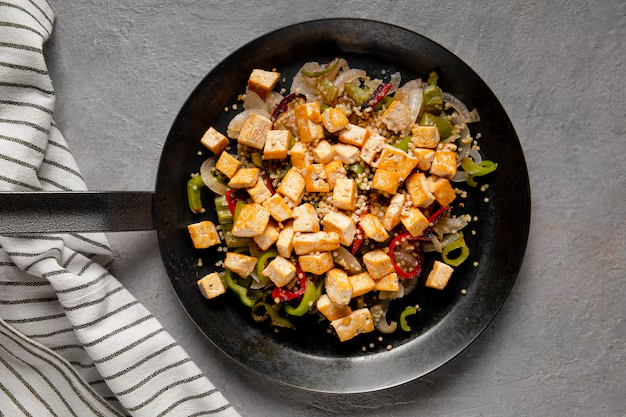
A vegetable stir-fry with tofu is a colorful, nutritious meal that aligns perfectly with the DASH diet. Tofu provides a plant-based source of protein that is low in saturated fat and cholesterol-free, making it a heart-healthy alternative to meat.
The dish includes a variety of vegetables like bell peppers, broccoli, carrots, and snap peas, which are rich in fiber, potassium, and antioxidants. These nutrients support healthy blood pressure levels and overall well-being. Stir-frying with a small amount of olive or sesame oil helps preserve the vegetables’ nutrients while adding flavor.
This stir-fry is easy to prepare and customizable based on your preferences. Avoid high-sodium sauces and opt for low-sodium soy sauce or fresh herbs to keep it DASH diet-friendly. Serve it over brown rice or quinoa for a complete, balanced meal that supports long-term health and blood pressure control.
Lentil Soup
Lentil soup is a warm, hearty, and nutritious meal that fits perfectly into the DASH diet. Lentils are an excellent source of plant-based protein, fiber, and important minerals like potassium and magnesium, which are essential for heart health and blood pressure control.
This soup is typically made with vegetables such as carrots, celery, tomatoes, and onions, adding both flavor and nutrients without excess salt. Using herbs and spices instead of salty seasonings keeps the dish DASH diet-friendly while still being tasty and satisfying.
Lentil soup is easy to prepare, affordable, and ideal for batch cooking. It makes a great lunch or dinner option, especially when served with a side of whole grain bread or a fresh salad. By focusing on whole ingredients and limiting sodium, lentil soup supports the DASH diet’s goal of promoting heart-healthy eating habits.
Grilled Shrimp Skewers

Grilled shrimp skewers are a light and flavorful meal that fits well within the DASH diet. Shrimp is a lean source of protein that is low in saturated fat, making it a heart-healthy option for those looking to manage their blood pressure and overall health.
Grilling the shrimp with vegetables like bell peppers, zucchini, or cherry tomatoes adds fiber, vitamins, and minerals without added salt or unhealthy fats. Marinating the shrimp in olive oil, lemon juice, garlic, and herbs enhances the flavor while keeping it low in sodium, which supports the goals of the DASH diet.
These skewers are easy to prepare and perfect for a quick lunch or dinner. Serve them with brown rice, quinoa, or a side salad for a complete meal. Grilled shrimp skewers provide a tasty way to enjoy lean protein and fresh vegetables while following the DASH diet.
👍 Tips to Follow the DASH Lifestyle
Gradually Lower Sodium Intake: To follow the DASH diet, begin by reducing salt slowly in your meals. Use flavorful herbs, fresh citrus juice, and a variety of spices instead of relying on salt for taste. This helps your palate adjust over time while still enjoying delicious food.
Choose Fresh or Frozen Produce: Focus on using fresh or frozen fruits and vegetables rather than canned ones. If canned items are necessary, choose products labeled “no-salt added” to stay within the DASH diet’s recommended sodium limits.
Build Balanced Meals: When planning meals, start with lean protein sources and fresh produce as your base. Then add whole grains and healthy fats like olive oil or avocado. This structure supports the core principles of the DASH diet.
Prep Ingredients in Advance: To make DASH-friendly cooking easier, prep ahead by chopping vegetables and pre-cooking grains or beans. This saves time and encourages healthier choices during busy days.
Control Portion Sizes: Use measuring cups or a kitchen scale to serve the right amounts of grains, proteins, and dairy. This helps manage calorie intake and supports the portion control focus of the DASH diet.
Choose Healthy Snacks: Snack on nutritious options like hummus with cut vegetables, Greek yogurt with fruit, or a homemade soy-nut trail mix. These snacks align with DASH diet goals and help maintain energy throughout the day.
Stay Hydrated with Smart Choices: Avoid sugary drinks and opt for water, unsweetened herbal teas, or fruit-infused water. These hydrating options support the DASH diet and overall heart health.
🌐 Comparing DASH with Other Diets
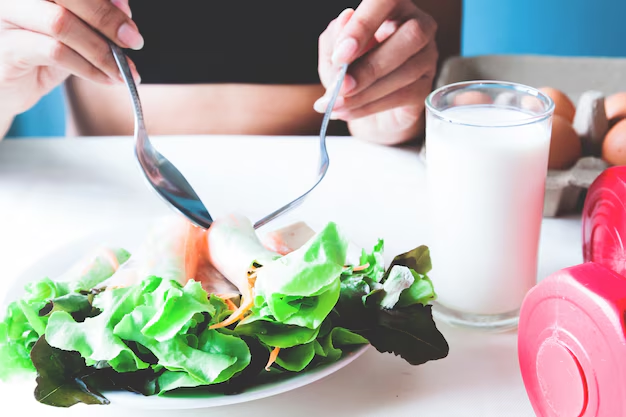
Mediterranean Diet Comparison: The Mediterranean diet and the DASH diet both focus on heart-healthy eating habits. However, the DASH diet places a stronger and more specific emphasis on reducing sodium intake, which makes it more structured in that area.
Low-Sodium Eating Benefits: Simply lowering sodium in your meals can improve heart health. But when this is combined with the DASH diet’s overall focus on balanced nutrition, the positive effects on blood pressure and cardiovascular health become even more noticeable.
Anti-Inflammatory Eating Similarities: The DASH diet encourages whole, nutrient-dense foods that are naturally low in added sugars. This aligns well with many anti-inflammatory eating plans, making it a great option for those looking to reduce inflammation through food.
📝 Sample DASH Diet Daily Menu
Breakfast: Spinach-mushroom omelet + whole-grain toast + berries
Snack: Greek yogurt & mixed berries parfait
Lunch: Quinoa-black bean bowl
Snack: Soy‑nut & dried fruit trail mix
Dinner: Baked salmon with asparagus + side quinoa
Dessert: Fresh fruit or dark chocolate square
Conclusion
In summary, the DASH diet provides a proven and practical way to improve overall health, especially for those looking to lower blood pressure and support heart health. By focusing on fruits, vegetables, whole grains, lean proteins, and low-fat dairy—while reducing sodium, added sugars, and unhealthy fats—it encourages balanced eating habits that are both effective and sustainable.
Unlike strict or short-term diets, the DASH diet promotes variety and flexibility, making it easier to follow over time. Its simple structure and tasty food options make healthy eating feel achievable and enjoyable every day.
Whether you’re managing high blood pressure or just aiming for a healthier lifestyle, the DASH diet can guide you toward long-term wellness. With steady steps and a focus on whole, nourishing foods, this plan helps support a strong heart, healthy weight, and overall vitality. Let the DASH diet lead you toward lasting, positive changes in your health.

FAQs
- What is the DASH diet ?
The DASH diet (Dietary Approaches to Stop Hypertension) is a healthy eating plan focused on lowering blood pressure by emphasizing fruits, vegetables, whole grains, lean proteins, and low-fat dairy, while limiting sodium, added sugars, and saturated fats. - Who should follow the DASH diet ?
Anyone can benefit from the DASH diet, but it’s especially helpful for people with high blood pressure, heart disease risk, or those looking to improve overall health through balanced eating. - How much sodium does the DASH diet allow ?
The standard DASH diet recommends limiting sodium to 2,300 mg per day, with an ideal goal of 1,500 mg for those needing greater blood pressure control. - Can the DASH diet help with weight loss ?
Yes, when followed with appropriate portion sizes and regular physical activity, the DASH diet can support healthy weight loss and long-term weight management. - Is the DASH diet easy to follow ?
Yes, it’s flexible and not overly restrictive. It focuses on real, whole foods and encourages gradual changes, making it easier to stick to over time.
